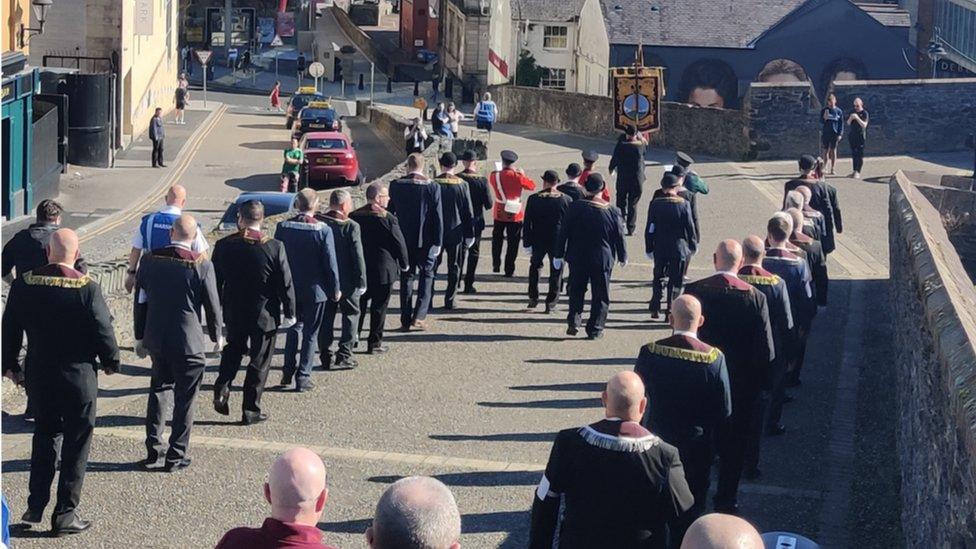Apprentice Boys parade takes place in Derry
- Published
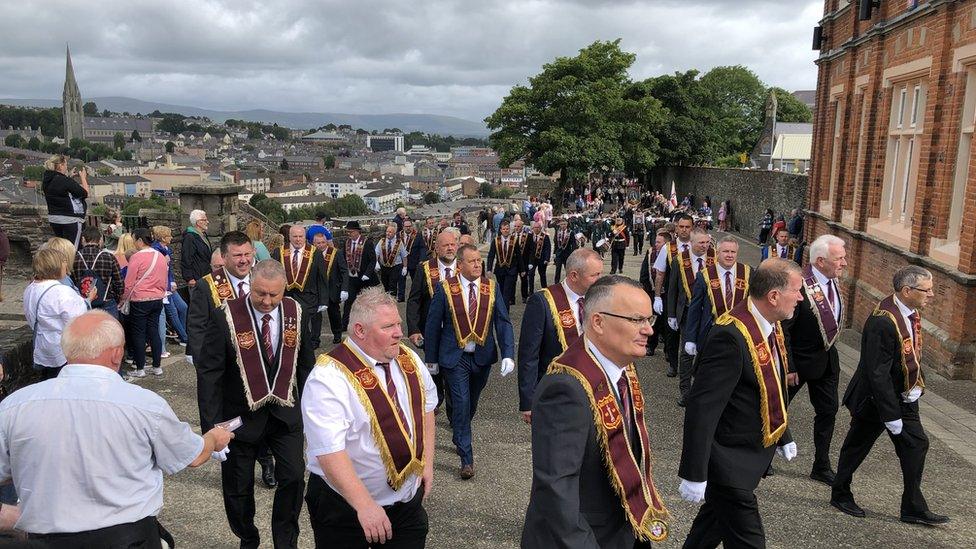
The annual tradition was a much smaller event this year due to the Covid-19 pandemic
The Apprentice Boys' annual Relief of Derry parade has taken place in the city on a reduced scale due to the coronavirus pandemic.
Traditionally, thousands of people attend what is one of Northern Ireland's biggest parades.
It marks the anniversary of the ending of the Siege of Derry in August 1689.
This year about 500 people from eight local parent clubs and eight bands took part in the parade.
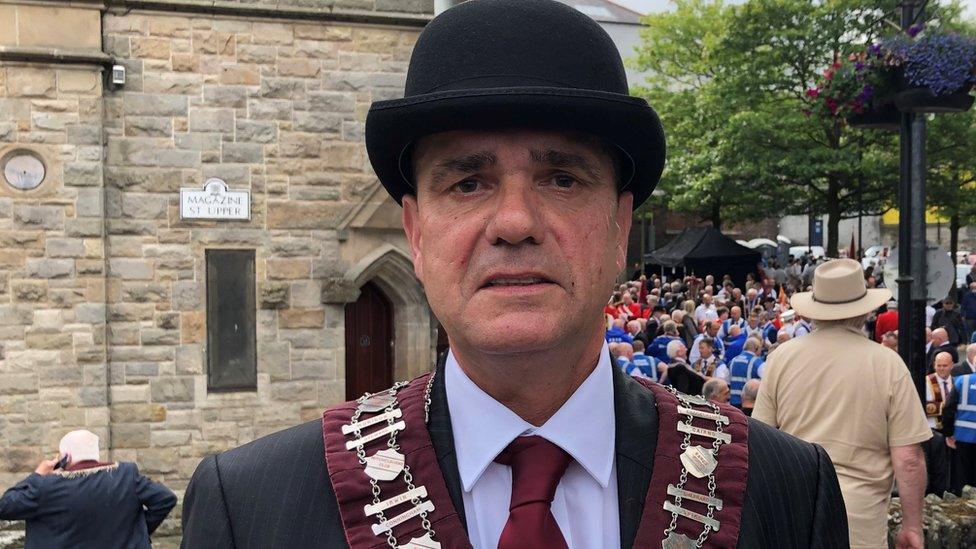
Graeme Stenhouse, the governor of the Apprentice Boys, hopes 2022 will bring a full-capacity parade
Last year it was reduced to just 30 representatives.
Graeme Stenhouse, the governor of the Apprentice Boys, said it was important that the organisation "continued to carry out historic traditions but in a manner that shows the correct guidelines that we're currently living in".
"Although our numbers are going to be limited again today we think we've shown great leadership and common sense by only having the local eight parent clubs and local bands parading," he said.
"Hopefully in 12 months we'll be able to welcome all our visitors and members from throughout the UK back to Londonderry."
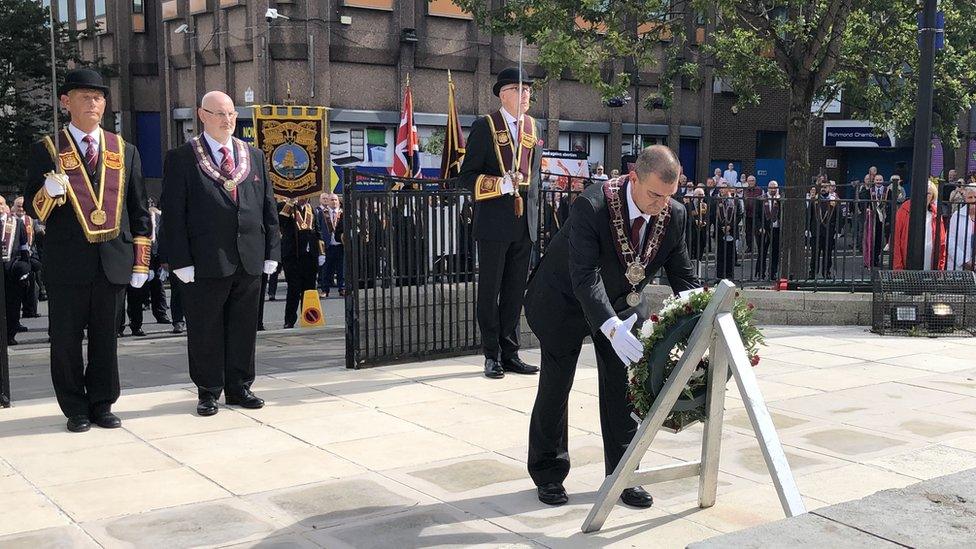
A wreath was laid at the at the city's war memorial
The event began with the clubs and bands walking a circuit of Derry's historic walls before a wreath-laying ceremony at the city's war memorial in the Diamond.
A service of thanksgiving was held on Thursday evening.
The siege of Derry took place against the background of the deposed Catholic King James II's attempt to regain his crown from his Protestant son-in-law, King William III.
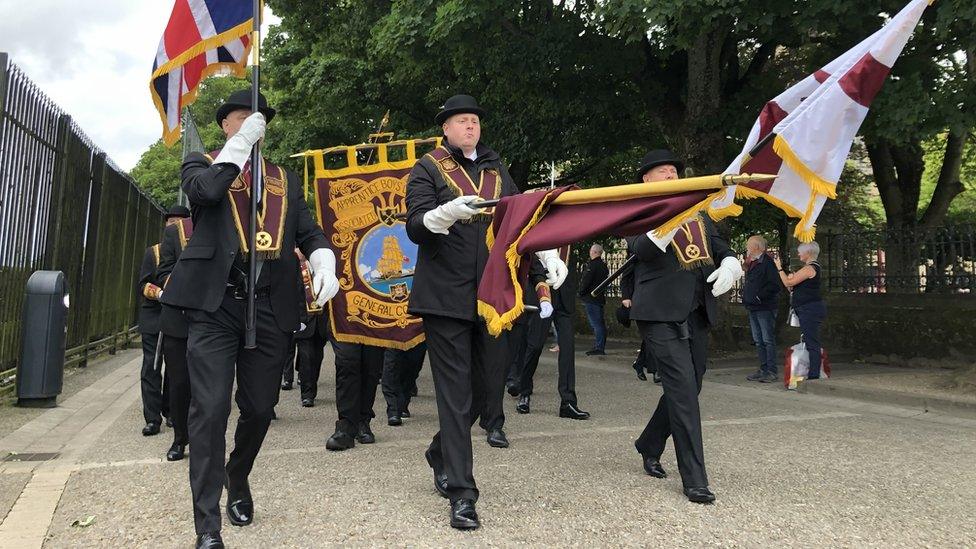
The parade celebrates the ending of the siege of Londonderry in 1689
Also known as William of Orange, or King Billy, the new monarch was supported by Protestants in Derry.
At the start of the siege of Londonderry in 1689, 13 apprentice boys slammed the city gates against King James' advancing Jacobite army.
The Apprentice Boys of Derry are based upon that defiant action of "no surrender" and hold their main parade in August to celebrate the relief of the city and the end of the siege.
The ending of the siege is known as the Relief of Derry.
Related topics
- Published11 August 2021
